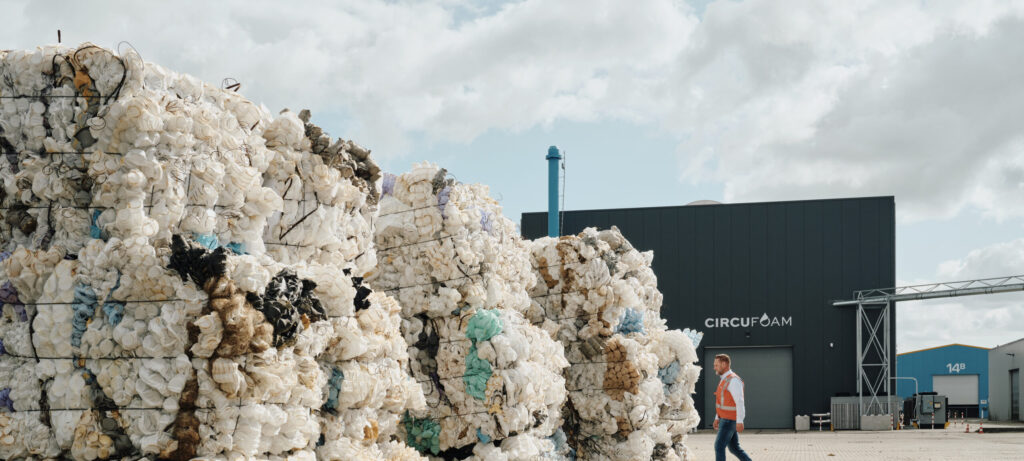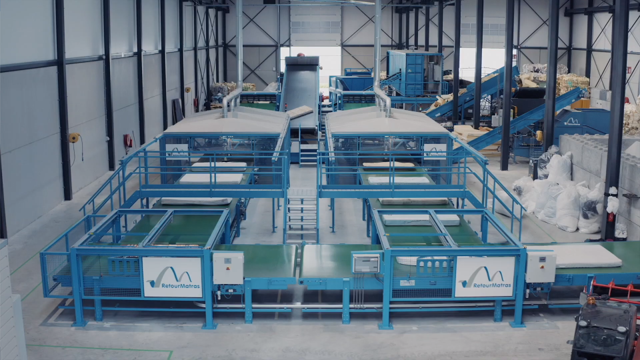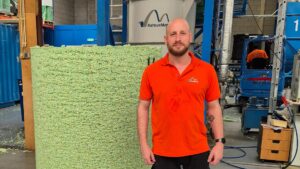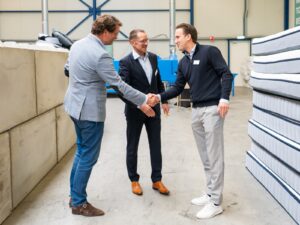This article was updated on September 16, 2025.
Europe is generating too much waste, and not enough is being recycled. The EU is working to create a more circular economy by preventing waste and improving waste management, among others. At the same time, there are goals to keep valuable resources in the economy. Extended Producer Responsibility (EPR) schemes are one important way of doing that.
What is EPR?
Extended Producer Responsibility makes producers responsible for the entire lifecycle of their products, including disposal and recycling. In practice, this means that manufacturers must contribute to the costs of collecting, sorting and recycling their products.
The case for mattress recycling
Every year, 41 million mattresses are thrown away in Europe – many of which end up in landfills or incinerators. That is a waste, because many of the materials used – from foam to metal and textiles – are perfectly recyclable, and can even be made into new materials such as RePoliol and Rebond foam.
European legislation
At the European level, the Waste Framework Directive (WFD) and the Landfill Directive form the backbone of waste legislation. At present, the Waste Framework Directive (WFD) sets the following targets: by 2025, the preparing for re-use and the recycling of municipal waste shall be increased to a minimum of 55%, by 2030 to 60%, and by 2035 to 65% by weight. (Source: WFD).
On 16 July 2025, the European Parliament adopted the revised Waste Framework Directive (WFD). For the first time, the Directive introduces mandatory Extended Producer Responsibility (EPR) schemes for textiles, textile-related products, and footwear across all EU Member States. Mattresses may be included at Member States’ discretion. Multiple European bodies, such as the Mattress Industry Association and the environmental organization NABU, are calling for EPR mattress schemes – yet, they are not yet implemented European wide. (Source: Cradle2Cradle)
National approaches: lessons from early adopters
Some countries have moved early. The Netherlands made mattress EPR mandatory in 2022, with producers paying a fixed fee that finances nationwide collection and recycling via MRN. Belgium started in 2021 with Valumat, and France integrated mattresses into its furniture EPR scheme back in 2012, cutting landfill from nearly 100% to under 4% today ( though recycling is still around 50%). Spain has recently launched Ecocolchon, while Portugal has already legislated that mattresses must be included in future schemes. In Germany, Austria and other European countries, industry-led pilots are underway, but there is not yet a binding framework. (Sources: EUROPUR; LIZENZERO; Deutsche Recyling).
Why is it not the same for every European country? Because EPR for mattresses is not (yet) mandated at EU level. On Parliament’s initiative, EU countries may set up EPR schemes for mattress producers, but it is not mandatory. This means that the exact scope and implementation will vary by country. Still, the direction is clear: EU policy is moving towards broader mandatory EPR schemes that are likely to include mattresses in the coming years.
Challenges for mattress producers
Recycling mattresses is not without its challenges. They are bulky, complex products and only clean, dry units can be fully recycled. The market for recycled foam is still developing, and many designs make dismantling more difficult than it needs to be. Yet, these are exactly the areas where innovation is happening: smarter logistics such as compaction containers, growing demand for recycled polyols, and eco-design solutions are already changing the game.
Opportunities in EPR for mattresses
Under EPR, all producers and importers pay the same eco-fee for every mattress they place on the market. This eliminates retailers who would otherwise avoid recycling costs and undercut competitors on price. Schemes also generate added value in the form of certificates and CO₂ reporting, which producers can use to prove their impact.
Beyond compliance, mattress recycling offers a clear sustainability story that can strengthen brand reputation and meet growing consumer expectations.
Role of recyclers like RetourMatras Group
Certified recyclers are the backbone of any mattress EPR scheme. RetourMatras Group combines automated dismantling with chemical recycling to recover raw materials (RePoliol) for new foam production. Through partnerships with municipalities, retailers, and producers, RetourMatras helps close the loop: for example, IKEA now sells mattresses in France with a minimum of 10% recycled foam. This demonstrates that high-volume circularity is already possible when the right infrastructure and partnerships are in place.
The future of EPR mattress schemes
At EU level, further legislation is on the horizon. The forthcoming Circular Economy Act, to be published in 2026, aims to establish a Single Market for secondary raw materials, increase the supply of high-quality recycled materials and stimulate demand for these materials in the EU. The companies that prepare now — by engaging with Producer Responsibility Organisations, improving eco-design, and securing recycled material supply. will be best positioned to turn obligations into opportunities. (Source: European Commission).
Want to know more about mattress recycling?
RetourMatras Group is a key player in mattress recycling in Europe and has extensive knowledge of EPR mattress schemes. Get in touch with our team, especially if you are a producer navigating new EPR obligations.




